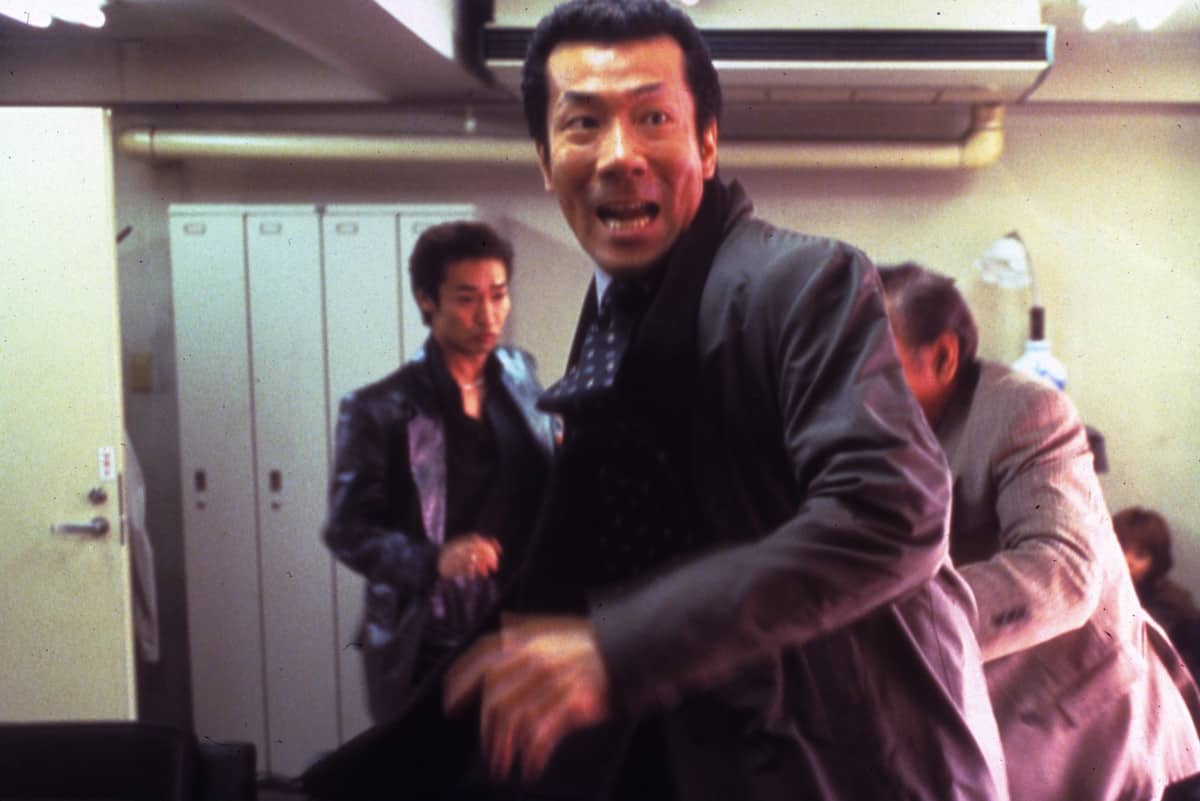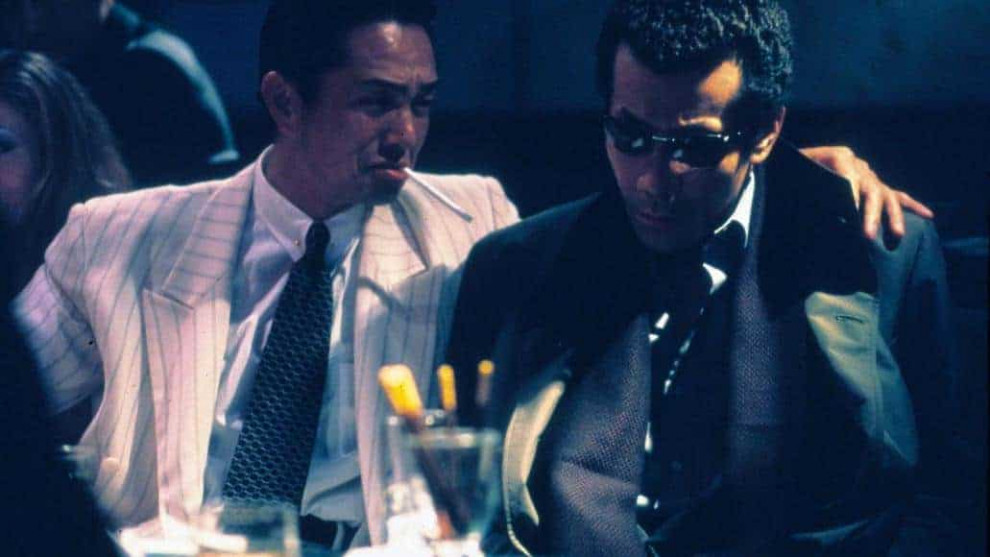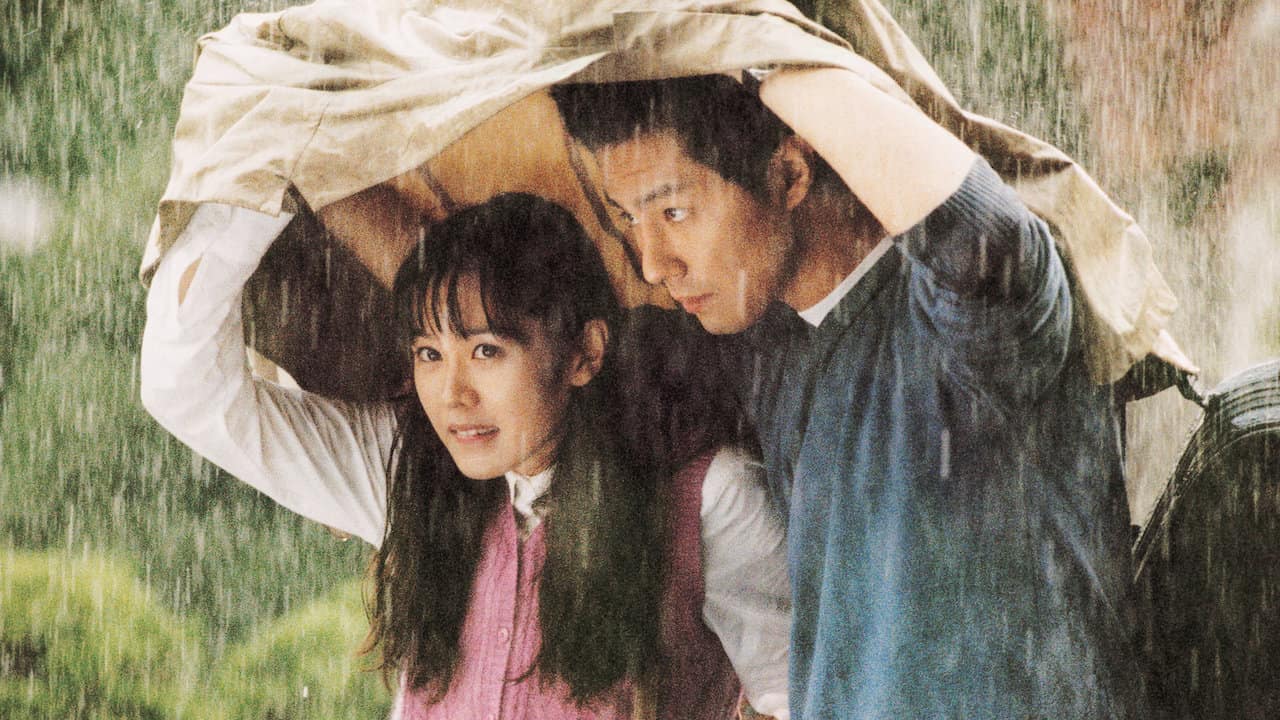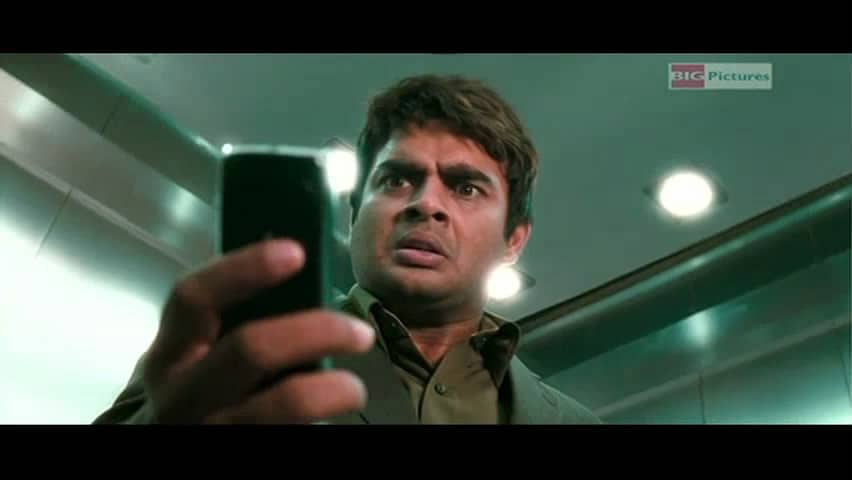In 2002, there was possibly no way of avoiding the presence of Japanese director Takashi Miike in his home country, given the incredible output of eight films released that year. Starting off with the final entry in the “Dead or Alive”-trilogy 2002 included such features as “The Happiness of the Katakuris”, “Agitator” as well as “Graveyard of Honor”, a re-interpretation of the original directed by Kinji Fukasaku in 1975. While some of the entries of that year have more or less disappeared into obscurity, perhaps one of the most notable development in Miike's career is the occurrence of two films – “Graveyard of Honor” and “The Happiness of the Katakuris” – based on an already existing film. But then again, a “remake” by Takashi Miike is never just a “remake”, it is always something quite unique.
Buy This Title

In an interview during the 2002 International Rotterdam Film Festival, Miike finds a moment of peace to talk about his motivation and his passion. Holding a cigarette in one hand, each gesture and phrase seems very thought through, a contrast to the hyperactive director one might have expected and more in line with the mentality of colleagues such as Takeshi Kitano. Looking back at his career, Miike seems to marvel at how far he has come in such a short amount of time, especially since he never really wanted to end up in a directing chair, but eventually liked the work and the spirit of a film crew so much he ultimately directed his first picture. Ever since then, similar to the protagonist in “Graveyard of Honor”, he feels he has to push himself forward in terms of the projects he wants to work on as well as the technical aspects of the medium he seeks to explore and use. With a slight smile on his face he tells the interviewer how he thinks of himself as a child easy to be kidnapped if someone is offering something promising to him.
“Graveyard of Honor”, according to author Tom Mes, is more than mere remake, unsurprisingly so considering it comes from the director of “Ichi The Killer” or “Audition”. Much like Fukasaku's original, which reflected the condition of Japan after the Second World War, Miike's version fits perfectly with his other works, a reflection of his home country after the burst of the economic bubble and a study of male disintegration, the breakdown of national identity and role models.

Rikuo Ishimatsu (Goro Kishitani) has reached what many serving within the rigid Yakuza hierarchy dream of. After having defended the head of an influential clan, Shinobu Sawada (Shingo Yamashiro), he quickly rises within their food chain receiving the title of boss of one of their territories, as well as the envy of his older colleagues and underlings. However, his reckless attitude and tendency towards violence have made him many enemies among their ranks, but also seems to be the binding factor between his relationship to the timid Chieko (Narumi Arimori).
After his first murder for the clan and the following jail sentence, his status seems to be cemented, even improved now that he even has a powerful ally and friend in Kozo Imamura (Ryosuke Miki), a powerful member of a rival family. However, as he asks his boss for some money, he misunderstands his absence for ignorance and rejection resulting in a downward spiral of violence which, once started, can not be held up to Ishimatsu's self-destructive side gradually taking over.

Perhaps the most incredible shots are not the violent outbursts of Ishimatsu as he heads straight for whatever darkness hell has in store for him, but he aftermath as he walks the streets of Tokyo. After his first murder – he sliced the throat of a rival Yakuza underling with a blade in one swift, almost magical motion – he is seen in one of the rare shots showing some kind of detachment to the action accompanied by Koji Endo's jazzy score, an image seemingly confirming this man is now part of the Yakuza-establishment, even though the cruelty of his actions, the delight he takes in them brand him an outsider at the same time. A second layer of confirmation is reached since none of the pedestrians seem irritated or shocked by the man trying to rub the vast amounts of blood from his face and clothes. At the same time, Ishimatsu is equally oblivious to his environment, as if others do not exist for him, and has accepted his outcast-state like so many of Miike's protagonists.
But there is one core difference between Ishimatsu and his actions to characters like Kakihara (“Ichi-The Killer”) or Ryuichi (“Dead or Alive”). While their actions are either results of a plan, an aim they strive for like Riki Takeuchi's character, Ishimatsu does not seem to have any kind of goal, most of his deeds seem to be the consequence of a previous action, a mere reaction or improvisation encouraged by his violent nature as well as his drive for love. Similar to Tadanobu Asano's Kakihara, love is mostly executed through extreme measures, masochism and acts of depravity such as his exploitation of the defenseless nature of Keiko, whose inexplicable loyalty towards him sparks his affection for her, in fact defines her as one of his rare emotional foundations, other than violence and destruction. But then again love is not the only force within him, as his inside seems to be in an eternal turmoil over which aspect of his character might come to the surface.
Consequently, Japanese actor Goro Kishitani plays Ishimatsu as a character always on the verge of madness, always one step closer to self-destruction. Within the vast body of work Takashi Miike has created over time, Kishitani's performance ranks among the most physical and committed, a description which equally applies to Narumi Arimori playing Chieko. In a scene during which we see the aftermath of Ishimatsu's encounter with heroin, he pushes himself through almost the entirety of his run-down apartment while Japanese heavy metal is played at full volume. Shaken by violent convulsions, he gathers whatever gun he can find on his “way” to the front door shooting each one until it is empty. While scenes such as this one have to be seen within the framework of Miike's film, which all bear a sensationalist attitude, rarely has the acting matched the direction so perfectly as in these images of excess, of acceptance of one's inevitable destruction and those around him.
Filmed largely in hand-held by Hideo Yamamoto, “Graveyard of Honor” develops a drive equal to the destructive force which is its central character. In typical Miike-fashion, many scenes still contain a degree of improvisation, of the imperfection Fukasaku had used in his original as well. Also, the use of music, the costumes, acting and choice of camera hint at a more European notion, reminiscent of the cinema of the French nouvelle vague, specifically Jean-Luc Godard. Narratively, Ishimatsu shares the same space with Jean-Paul Belmondo's character in “A bout de souffle”, given their almost nihilistic acceptance of their ultimate downfall. In the end, everyone will have to face the consequences of one's action, but the almost disturbing notion about Ishimatsu is how at ease he seems to be about burning all bridges behind him and his own demise, an idea written on his face and body from the first time we see him.
“Graveyard of Honor” is a film about the abyss, devotion and love as well as violence and destruction. With superb performances by Goro Kishitani and Narumi Arimori, a wonderful score by Kōji Endō and Miike's usual concepts of the outcast, social and political criticism, “Graveyard of Honor” is one of the best works of the director, one which should be named along with his great works such as “Ichi-The Killer”, “Audition” and “Blues Harp”. This is Takashi Miike at his bleakest, most nihilistic and also at his most accomplished.
Sources:
Mes, Tom (2003) “Agitator. The Cinema of Takashi Miike”. FAB Press.
Sachs, Ben (2010) “A Decade With Takashi Miike. The Drift: Graveyard of Honor (2002)”https://mubi.com/de/notebook/posts/a-decade-with-takashi-miike-the-drift-graveyard-of-honor-2002, last accessed on: 01/29/2018
An interview with Takashi Miike titled “Miike on Miike” is part of the German DVD release of the film.















